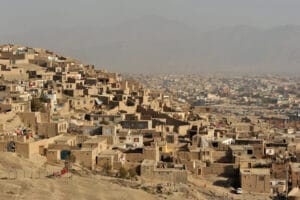RECENT EVENTS
August 22nd to September 5th 2021 saw two weeks of climate protest disruption from activist group Extinction Rebellion (XR) entitled ‘The Impossible Rebellion’. XR’s modus operandi continues to be targeting both the UK Government and the fossil fuel industry, as well as those companies who are financially affiliated. Joined by other prominent protest groups, such as Black Lives Matter (BLM) and Kill the Bill, their message was delivered across several activist platforms online and in person across multiple locations. This in turn increased attendance, awareness and reach. I.
THE COST
During the 2021 Impossible Rebellion, the police in London made over 480 arrests and brought in ‘thousands of officers a day’ to assist with policing the event. Officers removed 133 protestors who secured themselves to structures (including tables and vans). Financial institutions, Government buildings, museums, food outlets, a dairy distribution centre and Buckingham Palace were all targeted with demonstrations or occupations. Main London roads were blocked including Tower Bridge, London Bridge and Oxford Street. II III. associated policing cost has not yet been calculated. IV. The week long XR event in October 2019 (XR Rainbow Rebellion 7-14 October 2019) cost GBP 16 Million to police. After the October 2019 protests, 120 tonnes of rubbish were left on the street costing GBP 50,000 to clean up. V. VI.
REACTION
Deputy assistant commissioner, Matt Twist explained his frustration at the disruption describing it as ‘very serious’ and ‘totally unreasonable’, adding:
“They have the right to protest and assemble together, but this right must be balanced with the rights of others – those wanting to go about their lawful business unimpeded and without disruption…They’ve blocked traffic on two of London’s busiest bridges, defaced iconic landmarks and disrupted critical road junctions. Commuters’ journeys have been delayed, businesses had deliveries cancelled and the owners of landmarks have faced costly repairs.”
Extinction Rebellion replied stating:
“We will leave the streets when the Government starts treating the climate emergency like an emergency…Covid showed what the Government can do in a crisis, it’s the level of response required for the climate but sustained over years.” VII.
Protests at St Pauls Cathedral drew criticism from MPs including Tim Farron and Simon Fell. Fell in particular described the protest in St Pauls Cathedral during mass as ‘mindless’ VIII. and risked alienating the public. Rev’d Canon Jonathan Herbert, one of the Christian climate protestors responded saying:
“The Church Commissioners… don’t invest in companies producing arms or tobacco, but surely investing in fossil fuels, with what we now know, is almost as deadly.” IX.
WANING SUPPORT
Its possible XR’s popularity was not helped by the actions of splinter group ‘Insulate Britain’, who blocked a number of junctions on the M25 during rush hour five times in the last eight days, creating miles long delays and violent clashes with frustrated motorists. Police have made over 78 arrests as drivers complained about six hour tail-backs and delays getting to hospital due to the disruption. X.
Commentators suggest XR’s numbers are down from previous years (despite their multi-activist platform), with some noting arrests and attendance are much lower. XI.
Damien Gayle and Damian Carrington, writing for The Guardian newspaper, suggest support for XR is already waning within their own circles and highlight the stark difference in arrest figures from previous action. For example in April 2019, during almost two weeks of demonstrations, 1,130 activists were arrested by police, in October of the same year during a similar rebellion (protestors were seen to climb on top of London tube trains disrupting travel to work for many commuters) 1,768 were detained. XII. XIII.
It is also suggested the tendency for less static protests (occupying smaller sites for shorter periods of time) reduced the amount of public engagement and together with the police tactics of surrounding the demonstrators, their visibility and popularity was diminished further. XIV.
PCSC BILL
XR complained that police tactics were heavy handed and excessive XV. The groups and their props were dispersed and dismantled quickly leaving many to wonder if new tactics will be used in the future after the ratification of the Police, Crime, Sentencing and Courts bill.
The introduction of the new bill is proposing to allow the police ‘stronger powers’ when dealing with disruptive, non-violent protests. A Home Office spokesperson stated the new proposed bill is:
“In line with human rights legislation and in no way impinge on the right to protest… Public order legislation is out of date, and the use of disruptive and dangerous tactics – including obstructing emergency vehicles or blocking the free press – costs millions to the taxpayer and causes misery to businesses and local communities.” XVI.
Please see our previous for more information on the PCSC bill.
CONCLUSION
The cost to police this sustained event will likely run into the tens of millions and clear up costs are yet to be calculated. It is highly likely events such as this will further fuel the debate regarding the new public order legislation.
The public tolerance for the kind of disruption XR have recently engaged in, is reportedly diminishing. The reduced number of police arrests in comparison to previous XR events suggest it is a realistic possibility the numbers in attendance have also dropped.
Demonstrations such as the St Paul’s Cathedral protest and the M25 occupations are yet to prove to have aided XR’s following.
Advisory Services reporting cut-off date for this insight is Midday 21st September2021. WJ is not able to comment at this time on further developments


